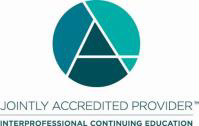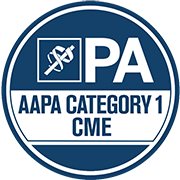WMJ Vol 120 Issue 2: Colorectal Cancer Screening After Changes in US Preventive Services Task Force Guidelines With Increased Screening Options
ABSTRACT
Introduction: In 2016, the US Preventive Services Task Force (USPSTF) added multitarget stool DNA and computed tomography colonography (CTC) as accepted colorectal cancer screening modalities to the already recommended tests: fecal immunochemical test (FIT), sigmoidoscopy, and colonoscopy. The aim of our study was to determine trends in screening after the USPSTF update, with the effect of additional tests on the use of existing colorectal cancer screening modalities and overall screening rates.
Methods: We prospectively compared monthly colorectal cancer overall screening rates and the mean total numbers of patients screened by multitarget stool DNA, colonoscopy, sigmoidoscopy, CTC, and FIT 6 months prior to the new USPSTF guidelines until 30 months after.
Results: At completion of the study, 72,202 patients were eligible for screening. The overall rate of eligible patients screened for colorectal cancer did not change (80.9% vs 81.3%; P = 0.287). There was a significant increase in the percent of patients screened with multitarget stool DNA (1.6% to 15.6%; P = .001) and a significant decrease in the percent of patients screened using CTC (3.8 % to 1.5%; P = .004), FIT (9.3% to 4.9%; P = .003), and sigmoidoscopy (2.4% to 1.5%, P = .024). There was a nonsignificant decrease in the percent use of screening colonoscopy, from 82.9 % to 76.5% (P = .313).
Conclusion: While the overall colorectal cancer screening rate did not increase after the USPSTF update with additional recommended screening tests, practice patterns did change with a shift in the type of screening test used.
Intended Audience
The target audience for this journal-based activity is healthcare providers caring for the people and communities of Wisconsin and beyond.
Learning Objectives
As a result of this journal-based activity, learners will be able to:
- Explain trends in colorectal cancer (CRC) screening after the US Preventive Services Task Force (USPSTF) updated guidelines in 2016.
- Discuss 6 CRC screening modalities recommended by the USPSTF guidelines and factors that influence screening patterns in clinical practice.
- Reflect on own practice of CRC screening and roles of healthcare team members in achieving/maintaining high screening rates.
FACULTY DISCLOSURE
It is the policy of the University of Wisconsin–Madison Interprofessional Continuing Education Partnership (ICEP) to identify, mitigate and disclose all relevant financial relationships with ineligible companies* held by the speakers/presenters, authors, planners, and other persons who may influence content of this accredited continuing education (CE). In addition, speakers, presenters and authors must disclose any planned discussion of unlabeled/unapproved uses of drugs or devices during their presentation.
For this accredited continuing education activity all relevant financial relationships have been mitigated and detailed disclosures are listed below.
| Name of Individual | Individual's Role in Activity | Name of Commercial Interest & | Discussion of |
| Marianna Shershneva, MD, PhD | Accreditation Specialist | No relevant relationships with ineligible companies to disclose | No |
| Mark Benson, MD | Author | No relevant relationships with ineligible companies to disclose | No |
| Andrew Johannes, MD | Author | No relevant relationships with ineligible companies to disclose | No |
| Jennifer M. Weiss, MD, MS | Author | No relevant relationships with ineligible companies to disclose | No |
| Michael Lucey, MD | Author | No relevant relationships with ineligible companies to disclose | No |
| Jeff Pier, BS | Author | No relevant relationships with ineligible companies to disclose | No |
| Patrick Pfau, MD | Author | No relevant relationships with ineligible companies to disclose | No |
| William Hueston, MD | Reviewer | No relevant relationships with ineligible companies to disclose | No |
| Brenda Rooney, PhD | Reviewer | No relevant relationships with ineligible companies to disclose | No |
| Robert Treat, PhD | Editor | No relevant relationships with ineligible companies to disclose | No |
Roberta Pawlak, PhD, RN, NEA-BC | Reviewer | No relevant relationships with ineligible companies to disclose | No |
Laura Ozkan, PA | Reviewer | No relevant relationships with ineligible companies to disclose | No |
*Ineligible companies are those whose primary business is producing, marketing, selling, re-selling, or distributing healthcare products used by or on, patients.
The ACCME does not consider providers of clinical services directly to patients to be ineligible companies.
Accreditation
Accreditation Statement
 | In support of improving patient care, this activity has been planned and implemented by the University of Wisconsin–Madison ICEP and the Wisconsin Medical Journal. The University of Wisconsin–Madison ICEP is jointly accredited by the Accreditation Council for Continuing Medical Education (ACCME), the Accreditation Council for Pharmacy Education (ACPE), and the American Nurses Credentialing Center (ANCC), to provide continuing education for the healthcare team. |
Credit Designation Statements
American Medical Association (AMA)
The University of Wisconsin–Madison ICEP designates this journal-based CE activity for a maximum of 1.0 AMA PRA Category 1 Credit™. Physicians should claim only the credit commensurate with the extent of their participation in the activity.
American Nurses Credentialing Center (ANCC)
The University of Wisconsin–Madison ICEP designates this journal-based CE activity for a maximum of 1.0 ANCC contact hour.
American Academy of Physician Assistants (AAPA)
 | The University of Wisconsin–Madison ICEP has been authorized by the American Academy of PAs (AAPA) to award AAPA Category 1 CME credit for activities planned in accordance with AAPA CME Criteria. This activity is designated for 1.0 AAPA Category 1 CME credits. Approval is valid until 2/9/2023. PAs should only claim credit commensurate with the extent of their participation. |
Continuing Education Units
The University of Wisconsin–Madison ICEP, as a member of the University Professional & Continuing Education Association (UPCEA), authorizes this program for 0.1 continuing education units (CEUs) or 1 hour.
Available Credit
- 1.00 AAPA Category 1 CME
- 1.00 AMA PRA Category 1 Credit™
- 1.00 ANCC Contact Hours
- 1.00 University of Wisconsin–Madison Continuing Education Hours
- 1.00 Approved for AMA PRA Category 1 Credit™
Required Hardware/software
Free, current version of Chrome, Firefox, Safari, or Edge. Some older browsers and Microsoft Internet Explorer could produce error messages or not display the content correctly.
Free, current version of Adobe Acrobat Reader or other .pdf reader.

 Facebook
Facebook X
X LinkedIn
LinkedIn Forward
Forward